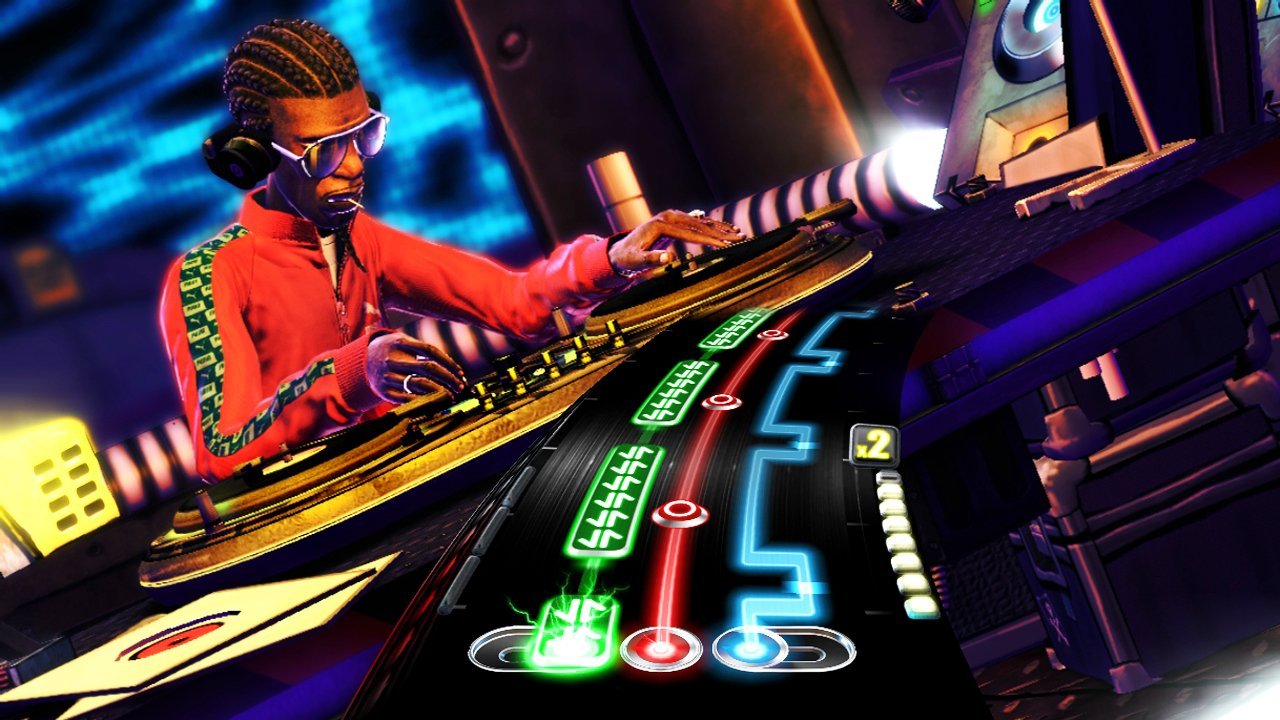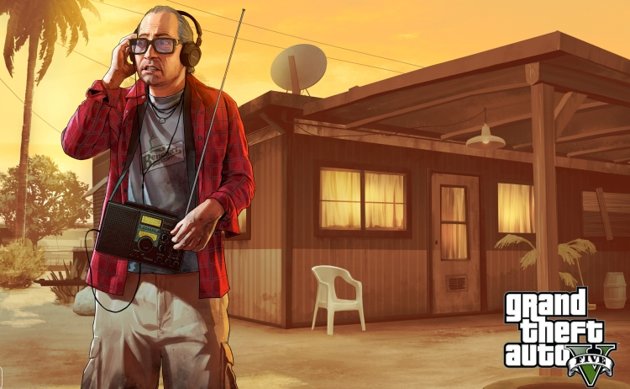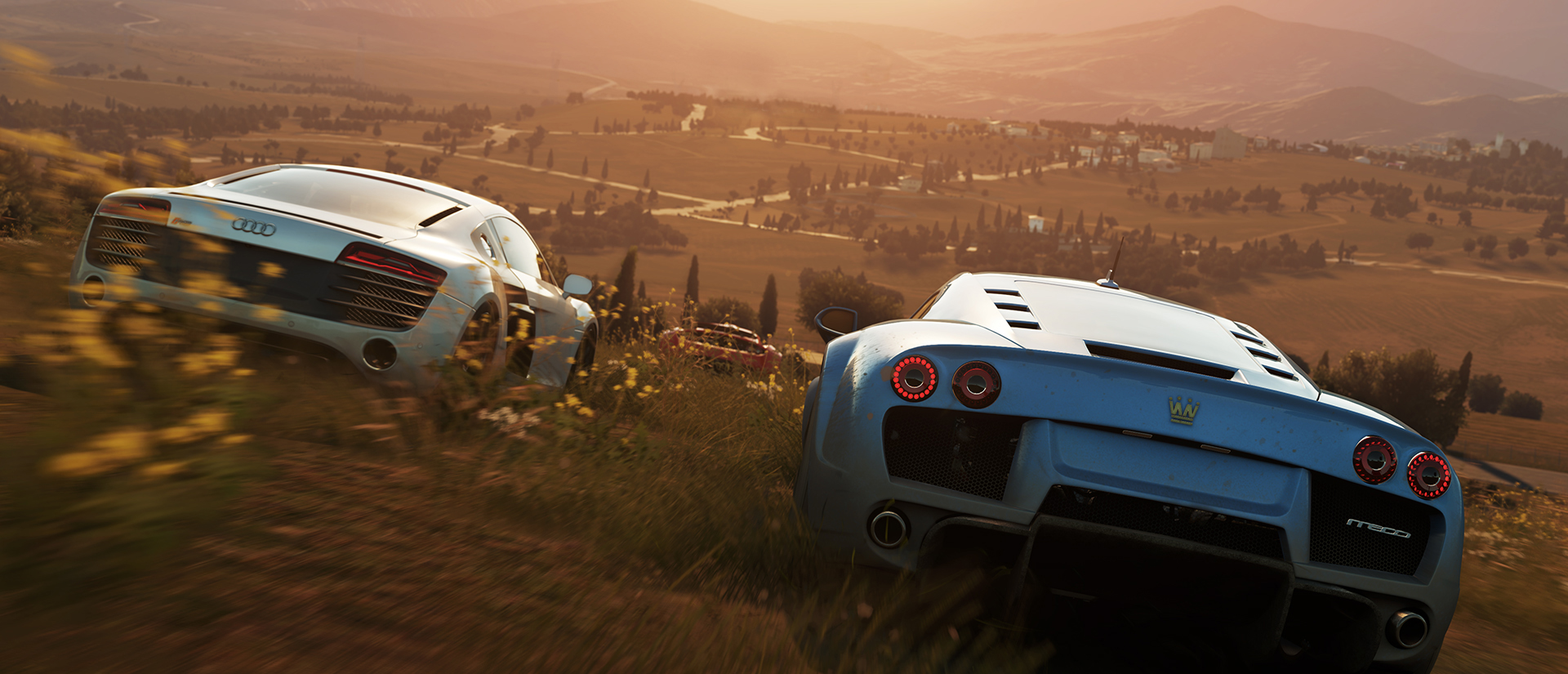We've all been there: you’re cruising in your car, nodding along to the 4-4 pulse of Robert Owens’ house classic ‘I’ll Be Your Friend’. It’s night-time. You’re ready for a club. Everything’s set. Then, suddenly, you’re under heavy gunfire.
You handbrake the car, spin out of the door and return equally heavy fire from one of several AK-47s in your possession. Street battle over, you’re back behind the wheel making good your escape to Joe Smooth’s ‘Promised Land’. This is digital city San Andreas and that was a virtual gang fight – sound-tracked, thrillingly, to some of the finest house music ever committed. You’re playing mega console franchise ‘Grand Theft Auto’. How the sonic video game experience has changed....
In truth, video games and popular music are old bedfellows. Cult 1982 Atari title ‘Journey’s Escape’ featured supreme US rock band Journey and their global hit ‘Don’t Stop Believin’’ (the user protecting the band from manic groupies as they flee, post-concert, back to their tour bus) whilst ‘The Legend Of Zelda’, released by Nintendo in 1986 on the Famicom Disk System, featured a score by pioneer sound designer Koji Kondo incorporating samples of Deep Purple. Even in the gaming industry’s earliest moments there was a desire to encourage and enliven play by referencing another, more established strand of popular culture.
That culture was staring right back at the computer screen. Japanese electro-poppers Yellow Magic Orchestra sampled arcade sounds for several early albums at the tail-end of the Seventies. Disco singer Ronnie Jones recorded song ‘Video Games’ in 1980, a kooky-funk tribute to the rising trend for console and arcade entertainment. Soon after came Washington DC’s proto hip-hop band Trouble Funk with ‘Arcade Funk’ and The Jonzun Crew’s Pac Man-inspired electro-groove ‘Pack Jam’. Nevertheless, the correlations between dancefloor and video game remained sporadic. This was largely driven by the financial and technological practicalities of coding the latter. At the time, games were usually written in assembly language making it difficult for musicians to become involved in song-writing. The industry, too, was tiny - driven by accordingly tight budgets, programmers would multi-task between all aspects of production; and in many respects music was viewed as an afterthought.
Towards the end of the Eighties, and into the early Nineties, came change. 16-bit (1MB-plus) computers landed, their games available on the new CD-ROM format which allowed for audio-CD quality music (Redbook Audio) to be recorded alongside core game programming. Copyright and licensing naturally became a challenge, popular pre-composed music now being accessible to games companies. However, the creative momentum was irresistible.
Psygnosis’ ‘Wipeout XL’, released in 1996 to PCs and the first Sony PlayStation, was a major turning point. The futuristic racing game boasted tracks by several popular electronic acts including Chemical Brothers, Future Sound Of London, Fluke, Prodigy and Daft Punk. In turn, it was cross-promoted by Sony Records, who released the soundtrack separately via music retail and even pushed promos to key club DJs in London and New York. ‘Wipeout’, an unstoppable commercial and cultural phenomenon, effectively launched Playstation to the mass global market. The synergies between gaming and music industries were starting to formalise – games being used to promote and sell records; recording artists being used to sell games.
Aside from one-off campaigns with established artists, the big gaming companies were also beginning to hire young electronic musicians seeking a different audience for their output. During the late Eighties, cult Japanese house DJ-producer Soichi Terada, owner of the Far East label, moved to Sega for example. By the following decade he was providing upbeat dance beats for popular Sega games including ‘Ape Escape’.
As both games and club culture boomed during the Nineties, so the cross-pollination between the two continued to diversify. ‘Rise From Your Grave’, an exhilarating slice of acid-house recorded to Strictly Rhythm in 1992 by legendary club crew Phuture, made much of a sample from rabidly successful Sega Mega Drive game ‘Altered Beast’ (the game subsequently expanded to other gaming platforms). Other underground house and techno acts were also turning to gaming for ideas. Conversely, Inner City’s ‘Good Life’ provided substantial inspiration for a track within Sega beat ‘em-up sequel ‘Streets Of Rage 2’. In actual fact, the game’s entire ‘chiptune’ soundtrack was inspired by dance culture, its creator Yuzo Koshiro channelling his experiences of Tokyo clubbing into a riveting end product.
The gaming and music industries have continued to boom in their regular, ever louder collisions over the past 15 years or so. And, still, there is no sign that the relationship is about to turn stale. A key factor behind this sustained prosperity is the ongoing, radical evolution of technology behind modern video games. Today’s consoles offer immense sonic performance. Xbox 360 One supports Dolby Digital surround sound and can work over 256 separate audio channels simultaneously with high-processing playback. Main rival Playstation 4 hasn’t released so much publicly about its audio spec, suffice to say that the spec is fiercely competitive and includes dedicated ‘audio hardware modules’ supporting superior sound performance.
The upshot for games developers is far greater freedom and choice on how to develop music within new titles; this necessitates far greater and far more direct involvement from external music producers and artists – particularly within the spheres of club and EDM music, perhaps the most popular genre for the gaming industry’s habitually young audience. Artists, on the other hand, are seeing today’s games franchises launch with the glamorous muscle and might of a Hollywood blockbuster. The gaming industry is vast nowadays providing artists with further scope for innovation and commercial progression through wider exposure.

Of course the vibrant synergy between games and dance music has become more than just the individual growth of those two industries, and more than just an intensified back-scratching exercise when both join ever-expanding forces. It has become its own singular, fully immersive thing. A sensory epoch driving the user’s experience – as both gamer and listener – rather than merely accompanying it. Rhythm-action video games like ‘Guitar Hero’ (2005) and ‘DJ Hero’ (2009) are one thing; the latter, in particular, putting you at the thumping heart of modern clubland by encouraging you to rock a crowd with cutting edge tracks curated by the likes of Grandmaster Flash and Daft Punk. But mega action-adventure series ‘Grand Theft Auto’ is quite another.
Since the series’ launch in 1997, publisher Rockstar Games has wielded music within the epic ‘GTA’ universe in increasingly powerful and integrated ways. New benchmarks for gaming audio have been set, revised and then continually re-broken. “Rockstar has always been known for the music in its games, dating back to the beginning of the company” Ivan Pavlovich, Rockstar’s Music Supervisor, said in 2013. “So we're all trying to build on what we've done in previous games. ‘GTA’ was the first game to incorporate this idea of radio stations into the video game. So with every game we want to develop it even more.”
With the latest series instalment, ‘GTA V’, that has an included a separate score co-directed by German electronic pioneers Tangerine Dream. The score has been carefully worked to co-exist with 15 in-game radio stations hosted by A-list DJs like Bootsy Collins, Lee ‘Scratch’ Perry and Gilles Peterson. Those stations broadcast over 240 specially licensed songs including those by Flying Lotus, Joe Goddard, Green Velvet, SBTRKT and Four Tet. The end result, according to Pavlovich, is: “creating these incredibly detailed and authentic worlds for the storyline to develop in. The radio is another level in this world to make it living and breathing.”

Historically, the ‘GTA’ series has worked with everyone from Francois K to Soulwax, and pushed the widest possible electronic playlist including Soulsearcher’s Defected-released disco nugget ‘Can’t Get Enough’ (in ‘The Ballad Of Gay Tony’, 2009). “The radio is more of an immersive experience than just the songs we’ve licensed or what those stations are” Pavlovich comments. “It's not just the songs that are on the radio. It's the advertisements, the banter, the introductions, the news feed that you have on the radio that will inform you of what's going on in the game. It's a part of this living, breathing world.”
Pavlovich acknowledges the giddy business and marketing boost that licensed music gives to ‘GTA’. Within three days of release in late 2013, ‘GTA V’ generated over $1bn worth of sales: “It’s [working with music artists] a great talking point. I mean you’ve seen the amount of hype that’s surrounding it with people on social media.” However, clearly, the relationship between game and music has reached a worthier plateau. “The point that we're getting to is that we have real fans out there in the artists” he adds. “These are kids who grew up playing ‘GTA’ who are now musicians and artists, and this is the way they communicate online. It's a really natural thing that's happening. It's amazing for everybody.” Today’s intersection between game and music is sparking a whole host of new and exciting, organic realities.
Back in the mid-Nineties, the musical composer behind colossal fighting game franchise ‘Tekken’ was already acutely aware of how games made people hear differently. Speaking to the Red Bull Music Academy, Taku Inoue explained how ‘Tekken’ represented the first time many young people would be exposed to dance music. Therefore he worked doubly hard to ensure his drum & bass and proto-dubstep sounded crisp, credible and totally amazing. That realization of the reach of gaming culture, and influence through it, has accelerated insanely over the past few years.
Take revered drum & bass imprint Hospital Records. The label has contributed material to a variety of high-profile gaming titles now such as ‘Forza’, ‘Gran Turismo’, ‘Wipeout’, ‘Sims On EA’ and ‘FIFA Street’. Fledging artists are being given the opportunity to hit big international audiences with their versatile electronic productions, all in a unique, open-minded digital environment guaranteeing sustained interaction and engagement. What’s not to love?

Keeno’s single ‘Nocturne’, released on Hospital sub-label Med School in 2013, went from 20,000 plays on its official You Tube channel to over 100,000 once placed on the ‘Forza Horizon 2’ soundtrack; a soundtrack also featuring contributions from Ninja Tune and Defected (namely Oliver $ & Jimi Jules’ house staple ‘Pushing On’). But Ashley Howard, Head of Publishing & Sync at Hospital offers a word of caution: “One of the biggest errors you can make is trying to A&R the music on the label, trying to steer it in a direction specifically for sync [with video games]. Invariably you will get it wrong, you won’t get the sync you wanted, and you’ve compromised your musical integrity and probably not sold any records either.”
Meanwhile, Christmas is fast approaching and with it a fresh batch of gripping games releases interwoven with dazzling dance and pop soundtracks. Who knows, in the future they may become timeless cross-cultural game-changers. Data Discs, a new London-based record label dedicated to releasing video game soundtracks on vinyl, is already documenting (and celebrating) some of those first important steps across the gaming and music divide. This autumn it reissues the club-driven sounds of ‘Streets Of Rage 2’ as deluxe vinyl including composition ‘Gone Straight’, Yuzo Koshiro’s striking take on Inner City. Joyous, riotous techno in more ways than one....
Words: Ben Lovett

Defected In The House Amsterdam 2015 is out 02 October 2015 (3CD and digital) on Defected Records - order from iTunes and DStore



